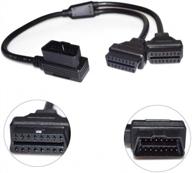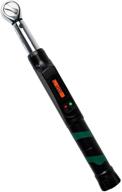
Review on 🔋 High-performance OTC 3181 Battery Load Tester - 130 Amp Heavy-Duty by Justin Gore

BATTERY LOAD TESTING - THEORY AND PRACTICE
I bought this unit to replace an old unit I bought from Harbor Freight which I found unreliable as the volt meter reads over 16 every time, which is far from the norm when tested with my DMM. Received the unit and was pleased with the build quality and accurate voltage readings that compare to my DMM. The device showed that one battery was good and one was about to. But I want to write about what I've already learned about battery testing to clear up some confusion on the matter. What follows is based on some experience and reading from trustworthy websites (not forums) and sorting through other reviewers' comments. If I'm wrong about anything here, feel free to correct me.1. The stress test simulates a battery's capabilities during operation. A simple voltage test is therefore not sufficient. However, you should start with a voltage test to ensure the battery is fully charged before beginning the load test. A rating of 12.7 or higher is considered 100% loaded. With less, you have to charge the battery, otherwise you will get incorrect readings under load. 2. Before charging, check the accuracy of the load tester with a reliable multimeter. Adjust your final readings accordingly.3. Apply the load as indicated.4. You should see a voltage drop as the battery is now working. There are actual criteria and numbers as to what voltage is acceptable for different temperatures and CCA values. For example, I found a source that gave the following range of voltages under load as a function of temperature. At zero degrees Fahrenheit, the minimum allowable stress under load is 8.9. At 120 degrees Fahrenheit, that's 10.1. It also seems that the higher the CCA, the higher the minimum allowable voltage, although I can't agree on exact numbers. The manuals for the digital version of this device provide detailed temperature and CCA conversion settings, but the differences are minor. Suffice it to say that at average temperatures, an average voltage reading of 9.5 under load means your battery is fine. When the download button is released, the voltage should return to its original point after a few minutes and indicate a full charge if the battery is fine.5. Suppose you don't trust your load tester's voltage readings. Try what I did. Attach the cables of your trusty multimeter to the battery poles with the clamps of the load tester. Now apply the load. Observe the voltage drop and read it. Anything under 9.5 at 70 F will likely need to be replaced.6. Conclusion: WHAT COUNTS IN THE LOAD TEST IS AN ACCURATE MEASUREMENT OF THE VOLTAGE UNDER LOAD. There is some interpretation left up to you as to how detailed or subtle you want to be. You also need another test device like the Ancel BA101, which gives additional information, such as how much battery is left to start, but does not provide a real stress test. In between, you'll get a better picture of your battery health.
- Worth the money
- No paint needed
New products
Comments (0)
Top products in 📊 Diagnostic, Test & Measurement Tools

Upgrade Your Car Diagnostics With 16 Pin OBD2 Extension Cable Splitter - Male To Dual Female Y Cable - 50CM

17 Review

Vgate ICar Pro Bluetooth 3.0 OBD2 Code Reader OBDII Scanner Scan Tool Car Fault Diagnostic Check Engine Light For Torque Android

22 Review

Vgate ICar Pro Bluetooth 3.0 OBD2 Code Reader | Scan Tool For Torque Android To Check Engine Light & Car Faults

19 Review

eTORK 3/8-Inch Drive "Click Style" Electronic Torque Wrench: Precise Torque Control (25-250 In. lbs., 2-20 ft.-lb.)

12 Review
Another interesting products

Durable and Versatile: Introducing Cartman 148-Piece General Household Plastic Set

8 Review

Screwdriver Electronics Klein Tools 32581

6 Review

Efficient LivTee Removal Interior Vehicle Installer: Simplify Your Car Interior Upgrades

3 Review

🔧 Ultimate Precision: VISE GRIP Diagonal Cutting Pliers 2078306 - The Perfect Tool for Accurate Cuts

7 Review

